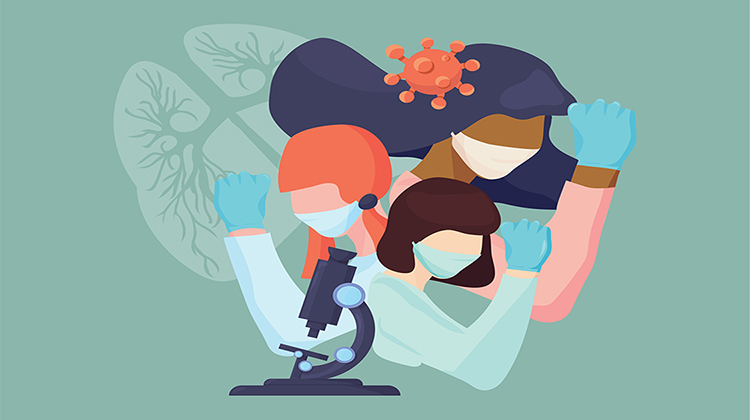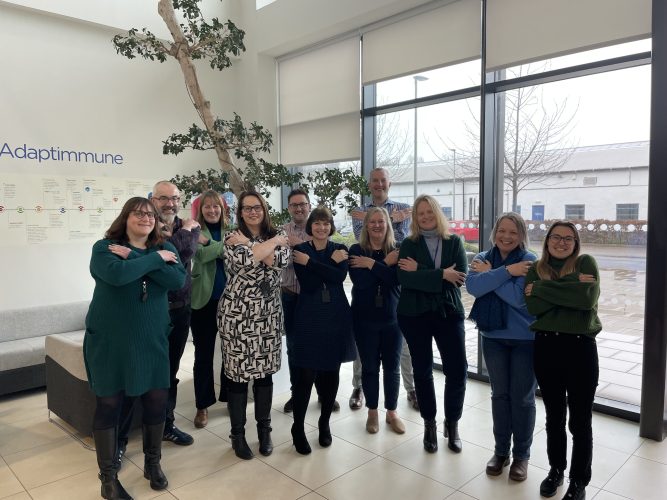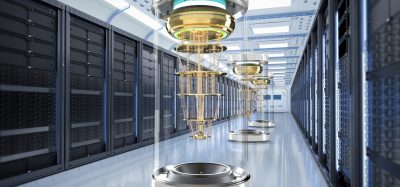Women in STEM with Dr Jo Brewer
Posted: 29 June 2023 | Dr Jo Brewer (Adaptimmune) | No comments yet
Come and join us for our monthly series highlighting Women in STEM. We are excited to present the latest edition for June, featuring an exclusive interview with Dr Jo Brewer, Chief Scientific Officer at Adaptimmune. With a remarkable 15-years of experience in cell therapy, Jo’s passion for cells has been thriving since her university days.


Can you tell us about your journey in the field of science, technology, engineering and maths (STEM) and the challenges you encountered along the way?
At school I was encouraged to follow science because I was good at it. It felt natural to follow what I was good at, and they pushed everybody to be the best they could be. That’s how I was brought up. Later in my career, having a family and children also caused some good and bad experiences. When I went on maternity leave with my first child, that was a really good experience because I was one of four mothers in a company of about 40 people. We all went on maternity leave at the same time. We were all encouraged to come back on our own terms because we were all really valued. And that was fantastic.
By the time I had my second child, the company was a bit bigger and when I returned from maternity leave, I was a group leader, but I didn’t get my group back. But looking back on it now, maybe I should have stood up for myself and what I wanted. On the upside, however, that’s one of the reasons why I joined Adaptimmune. I was looking for a role that would basically allow me some form of progression.
Challenges inevitably arise; but if you miss out on one opportunity, there are always others if you go looking for them. And that’s certainly what I’ve found.
Could you share an example of a specific project or some research that you have worked on and the impact it has had in your field?
I think one of the biggest things we worked on was in the early days of Adaptimmune; we had a positive programme, which was around NY-ESO, our first antigen target. We had that in the clinic and we then started our second programme, a MAGE-A3 targeted TCR. As we initiated that programme, we had two patient deaths. That was transformative for the field due to the investigation that was necessary immediately afterwards. We were a tiny company at the time, but every single person was working on trying to understand what happened to cause those deaths.
Looking back, at the way we approach safety in preclinical testing and in IND (investigation new drug) submissions was really changed by those papers. It set a precedent with regulators as to what is expected in some instances. Numerous organisations are adopting many of the techniques we developed considering that incident. It serves to demonstrate that important lessons can be learned when things go wrong, and great progress can be made on programmes that you hope really work for patients.
How has your research in STEM contributed to advancements or improvements in your field, and what potential future applications or implications do you foresee based on your work?
I think the cell-therapy field has evolved a lot – and is continuing to do so – in the time I’ve been working with this. Regarding the NY-ESO programme that we worked on, I started work on that in 2002 before we even knew that we were going to do cell therapy. We were looking at making bi-specifics, so looking at different things that we could attach to a TCR. It was all about trying to understand the fundamental biology of how you truly engage a T cell before we ended up working on the T cells themselves and developing a cell therapy.
You can see how far the field has expanded considering the iterations and the learning achieved, and considering the number of people who have joined. You see where the field is today across a whole range of different tumour indications; it is changing the way people think about medicine. Success in the haematology space has really been driving this from the beginning, which is not surprising as haem doctors understand stem cell transplants; they’re used to working with a lot of the sort of toxicities that can come with cell therapies.
We spent a long time talking to lots of different people about how this could become mainstream, and people are starting to believe that. I think it feels different out there now that cell therapy is real; it’s on the map. Obviously there are lots of issues to work on, but it’s a real modality that is changing people’s lives for the long term and changing the way we think about cancer treatments.
They’re hard and expensive, it’s a difficult thing to work on, but that promise of what it could be is still out there.
As a woman in STEM, what unique perspectives or strengths do you believe you bring to your work?
I think one of the reasons I love being here at Adaptimmune is the focus on the patients and the focus on the humanity of our staff. If you want people to do their best for you, then you must view them holistically; ie, think of their home situation.
One thing I’ve had to learn over the years is the difference between excellence and good enough. And actually, what drives products to the clinic is more doing things that are good enough to get them done within time and to a budget is actually better than focusing on perfection.
One thing I’ve had to learn over the years is the difference between excellence and good enough. And actually, what drives products to the clinic is more doing things that are good enough to get them done within time and to a budget is actually better than focusing on perfection.
If you don’t ever make commercial products, then you haven’t really fulfilled the potential you have. It’s great that we are in clinical trials, and we are helping a certain number of patients, but if you don’t make it to the market and all that involves, then you haven’t really won because you think of all those patients that you’re no longer serving if you don’t get to that end goal.
Only very recently have I got to the stage of having a five-year plan. When I started, I had no idea where I was going. I think it’s something I really had to get comfortable with. It starts at school. I mean, what do you want to be? I had no idea. There is pressure on people to have this direction and this knowledge.
People set themselves up to the point where they’re afraid to take steps and I know this was the case for me. Again, I had to get to a point where I was comfortable in myself and comfortable enough to let myself fail because otherwise you don’t take those risks, you don’t take those jumps that you need to take. It does require bravery. You must be brave to put yourself out there and say, this might go completely wrong and I’m going to be okay. One thing I could say to women, just give it a go. What’s the worst that could happen?


Adaptimmune for International Women’s Day 2023, celebrating this year’s theme #embraceequity.
What advice would you give to young women who are considering a career in STEM but may be hesitant due to societal stereotypes or perceived challenges?
Again, I had to get to a point where I was comfortable in myself and comfortable enough to let myself fail because otherwise you don’t take those risks, you don’t take those jumps that you need to take. It does require bravery.
I think there was one transformative event in my life, and it was literally an off-the-cuff comment made by the chairman of the board at the time. He said to me, “Well, I don’t see anybody else around here who could do this.” And I think it flipped my perspective at that point because I’d spent all my time thinking ‘oh, that’s too scary, there’s no way I could do it, I’m not good enough for that.’ But his words to me just made me think, ‘actually, yeah, but there’s nobody else who could do it ’. I considered; might I be better than some of my colleagues at this? And I could think of a couple of reasons why maybe I would be the right person for it. I think if you can kind of flip it around to why shouldn’t it be me? If you give yourself permission to fail, you also give yourself permission to succeed.
In your opinion, what can organisations and institutions do to create a more inclusive and supportive environment for women pursuing STEM careers?
Adaptimmune has a lot of women in the business, but we really do see them struggle to make those steps up in STEM careers. And part of that I think is around the pushing themselves forward and there’s a self-perception that they’re not good enough. Also, it’s vital to look at people as a whole; if people are starting families, better parental leave and better paternity leave really helps. If the burden is not all on the women, that makes such a difference. In mine and my husband’s careers, we’ve balanced those responsibilities over the years, and everything has been a family decision.
We need to get true equality where men are applauded for taking more time with their children. And that’s one of the things I have seen positively change in recent years and it needs to continue. Work is only a small part of your life; it’s not everything. When I considered taking the step-up to the C-suite, I grappled with having seen it ruin a lot of family life. I’ve witnessed lots of people struggle to keep that balance where their marriages remained intact. I had to feel comfortable that it would be compatible with my family life because that is important to me. Work is not above it; work is part of it.
Looking ahead, what exciting developments or advancements do you foresee in your field of STEM, and how do you envision your own research contributing to those future innovations?
I mean, I think cell-therapy is an great place to be. I think we’re nowhere near getting to the full extent of all the promise that there is for this. Because we are using cells as medicines, they’re living medicines that we hope that they become cancer treatments where it’s literally one dose and you’re done. When it comes down to cell biology itself, cells can do so many different things. I mean, I work on the immune system and that has all sorts of opportunities in oncology and autoimmune disease, but there are plenty of others in terms of diabetes control, looking into Alzheimer’s, Parkinson’s and others. Cells are the building blocks of people and it’s exciting how much we can change these days.
If you think about how chemotherapy has bloomed in oncology, you think about how antibody protein drugs have bloomed, and I think cell therapy is the next frontier. While autologous cell therapy involves giving patients’ own cells back to them, I think the long-term future is allogeneic cell therapy and certainly induced pluripotent stem cell (iPSC) products. These are exciting because they have huge potential to do a whole range of different things.
Being 15 years into cell therapy, I believe the next 20, 30 years will see great progress; there’s still a massive amount of untapped opportunity out there.


Dr Jo Brewer is the Chief Scientific Officer at Adaptimmune leading the Research division to generate innovative cell therapies for people with cancer.
Jo has more than 20 years of experience in immunotherapy research across the breadth of discovery in both autologous and allogeneic platforms. She was one of the founding scientists at Adaptimmune, who built multiple research teams working on the early SPEAR T-cell therapies including lete-cel (NY-ESO), afamicel (MAGE A4) and ADP-AFP, early next-gen approaches, including ADP-A2M4CD8, as well as her more recent focus on a stem cell derived allogeneic platform.
Prior to joining Adaptimmune in 2009, Jo held positions at Avidex, Medigene and Immunocore. She holds a master’s degree in Natural Sciences and a PhD in cellular signalling, both from the University of Cambridge, UK.
Related topics
Cell Cultures, Cell Line Development, Cell Regeneration, Cell Therapy, Cell-based assays, Drug Development, Drug Discovery, Gene Testing, Gene Therapy, Stem Cells, T cells, Targets
Related organisations
Adaptimmune
Related people
Dr Jo Brewer








